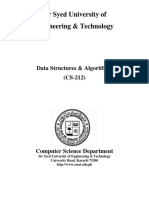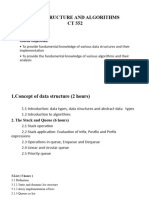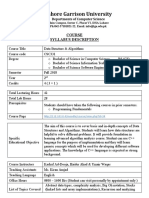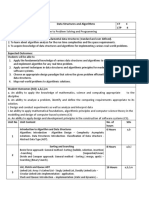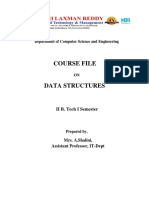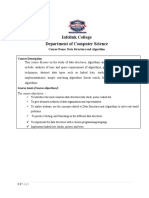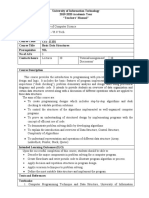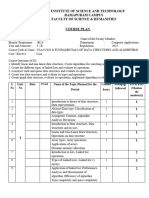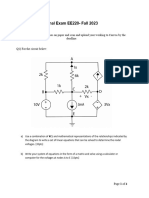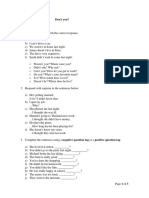0% found this document useful (0 votes)
42 views5 pagesDSA - Course Outline
This document provides information about the course "Data Structure and Algorithms (CS-443)" including its credit hours, prerequisites, teacher details, course learning outcomes, contents, objectives, teaching methodology, assessment, and schedule. The course aims to teach students to write efficient programs by appropriately structuring data using standard data structures like linked lists, stacks, queues, trees and graphs. Students will implement various data structures and analyze algorithm complexities. The course contents include abstract data types, recursion, sorting, searching algorithms, stacks, queues, linked lists, trees and graphs.
Uploaded by
Muhammad AbubakarCopyright
© © All Rights Reserved
We take content rights seriously. If you suspect this is your content, claim it here.
Available Formats
Download as DOCX, PDF, TXT or read online on Scribd
0% found this document useful (0 votes)
42 views5 pagesDSA - Course Outline
This document provides information about the course "Data Structure and Algorithms (CS-443)" including its credit hours, prerequisites, teacher details, course learning outcomes, contents, objectives, teaching methodology, assessment, and schedule. The course aims to teach students to write efficient programs by appropriately structuring data using standard data structures like linked lists, stacks, queues, trees and graphs. Students will implement various data structures and analyze algorithm complexities. The course contents include abstract data types, recursion, sorting, searching algorithms, stacks, queues, linked lists, trees and graphs.
Uploaded by
Muhammad AbubakarCopyright
© © All Rights Reserved
We take content rights seriously. If you suspect this is your content, claim it here.
Available Formats
Download as DOCX, PDF, TXT or read online on Scribd
/ 5

